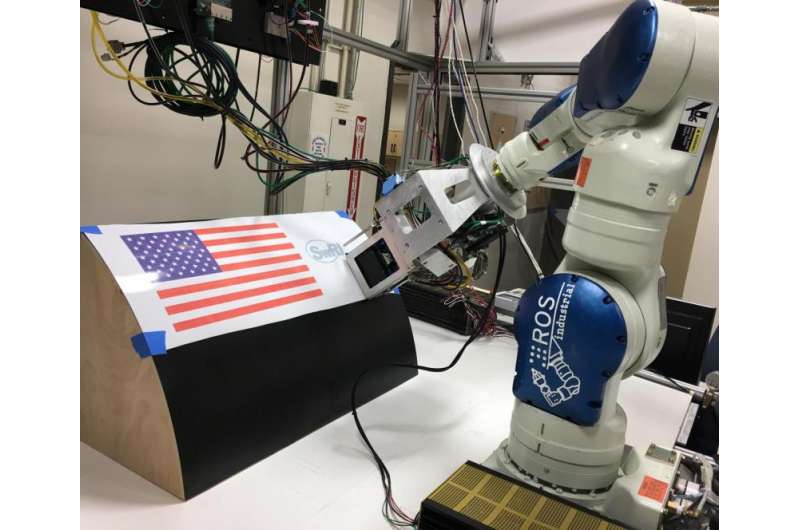Disruptive system enables robotic printing on large complex surfaces, including aircraft

Southwest Research Institute (SwRI), a leading innovator in advanced science and applied technology, has secured a patent for a technology for large-scale robotic inkjet printing on aircraft and other complex surfaces.
"As aircraft decorative coatings have become increasingly complex, the aircraft manufacturing and maintenance communities are seeking more efficient ways to apply complex graphics," said Clay Flannigan, who leads SwRI's robotics and automation engineering activities. "There is a lot of interest in using inkjet technologies applied to aircraft painting, but to fully leverage the potential efficiency and aesthetic advantages of process, the technology must be able to print on a variety of complex geometries and in varied orientations over large areas."
Flannigan added that inkjet printing provides superior performance compared to decals or appliqués, which are difficult to qualify due to adhesion and robustness issues over the wide range of speeds and environmental conditions in which aircraft operate.
Also known as direct printing, this inkjet painting process is a disruptive technology that allows for digital printing of complex graphics on everything from textiles to outdoor billboards. For the aviation industry, the SwRI-developed system can replace traditional, labor-intensive painting techniques to apply large graphics to aircraft fuselages, wings, tail fins, and engine nacelles.
U.S. Patent No. 9,527,275, for "High Accuracy Inkjet Printing," covers hardware and software for precise application of multiple graphic swaths of color ink onto complex surfaces, creating a continuous graphic image. Each pass of color, or graphic swath, can be aligned over curved surfaces without spaces, gaps, or discontinuities.
A vision sensor detects an encoded pattern to ensure accurate application of graphic images. The encoded pattern is deposited on the surface in a known location with respect to the most recently deposited graphic swath. The printing system includes high-bandwidth servo actuators to locate the print head with respect to the encoder pattern to permit precise positioning for the next swath.
The new technique is an internally funded outgrowth of SwRI's earlier work on the laser coating removal (LCR) technology. That system combines a mobile robotic platform, laser scanning technology and high-powered lasers for safe and efficient removal of paint and other aircraft coatings.
The inkjet development required SwRI to overcome obstacles associated with the large, complex surfaces to be painted, as well as the need to adjust for inaccuracies in robot positioning and vibration of robot structures.
"We have been developing new processes for removing paint from aircraft for nearly three decades. Now we are looking to revolutionize the way decorative finishes are applied to aircraft," Flannigan said.

















